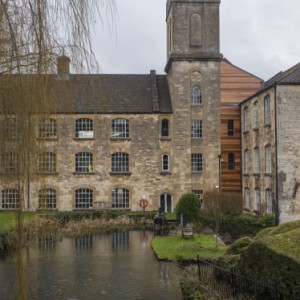The restored salt store at Brimscombe Port
It is Woodpeckers birthday which has been taken at a very leisurely pace. Eileen, her great friend from university days, (in the city that spawned Blipfoto. Big thanks to Joe, by the way!! We shouldn't forget) came to visit and have a snack lunch. Kirsty, Eileen's daughter also joined us with her friend Cameron, which was a treat for Bomble, as he always get lots of love from them.
When they left they took Helena up the Golden Valley as far as Chalford where she wanted to visit someone. She walked back along the Thames and Severn canal as far as Brimscombe where I drove to to pick her up. While I waited for her to walk along the towpath, I took a few pictures of the mill buildings and its pond which have been restored as offices.
The whole area is of great historical interest as it was an inland port on the canal linking the River Thames in the east with the River Severn. The port allowed trans-shipments from the Severn Trows, the wide sea-going sail boats which could navigate the lower Stroud Navigation canal. The narrow boats of the main inland waterway system could carry the goods up and over the Cotswold hills, and on to the Thames at Lechlade leading to Oxford and London. It was servicing the large woollen trade in the Stroud area, which sadly went into decline in the 20th century. The canal was closed by the 1940s and the port's extensive basins were filled in and many associated buildings were demolished.
The oldest remaining building of the port complex is this former salt store, which has been restored, but I'm not sure if it has a current use. I love the variety of repairs to the local limestone building, which show a range of materials and building techniques from different eras.
There are plans to open the canal as far as the port and for it to be the centre of a development project to revitalise the site, which I fully approve of. If you are interested there is a lot of information about the port and the canal in general here, as well as maps and archive photos.
I have blipped the mill building and the pond before so have relegated it to the 'Extra photos' but ti is well worth a look.
The Salt Warehouse
This building is one of only three surviving structures from the Port’s heyday. Along with the port wall and the East Wharf Cottage. As its name suggests the warehouse was used for storing salt shipped down by barges from Droitwich.
Droitwich salt came from evaporating brine in large pans positioned over fires. In Stroud the salt was used to fix the dye to the woollen fabrics that were produced along the valley. Once the textile had been dyed it was then soaked in a salt solution to make sure that the dye didn’t run or leach out at a later stage.


Comments
Sign in or get an account to comment.


